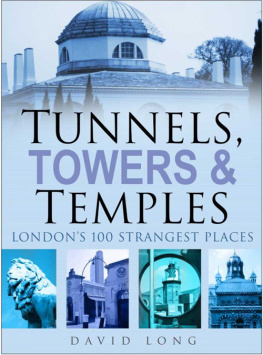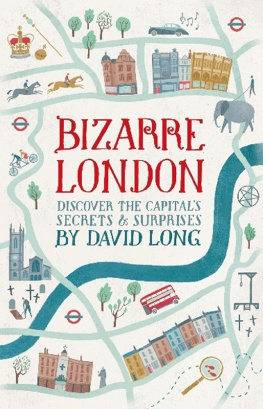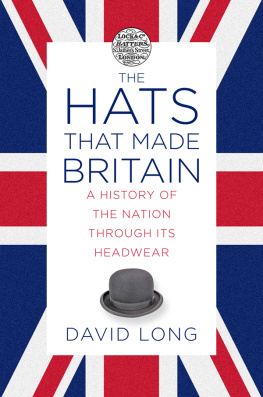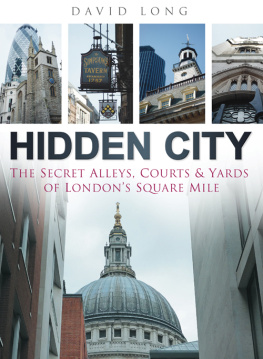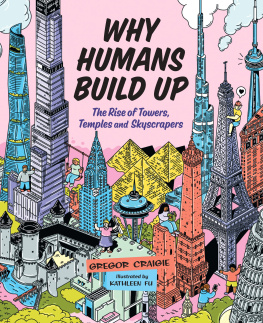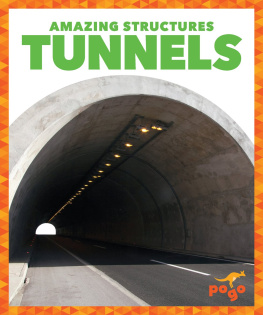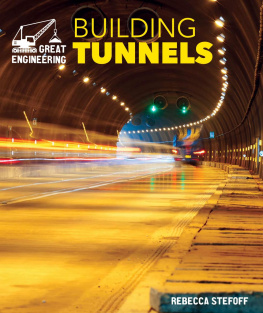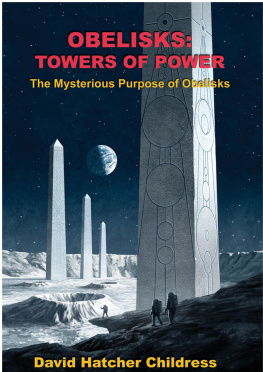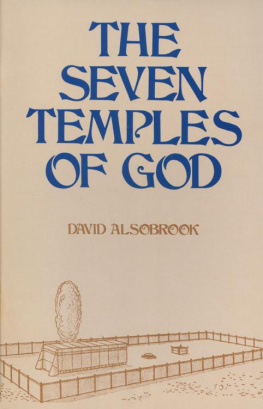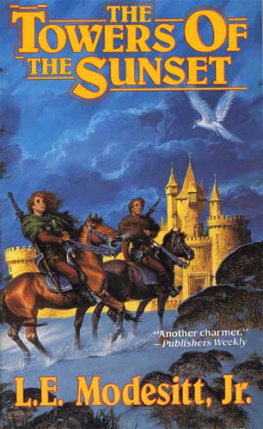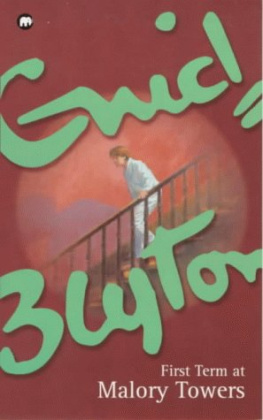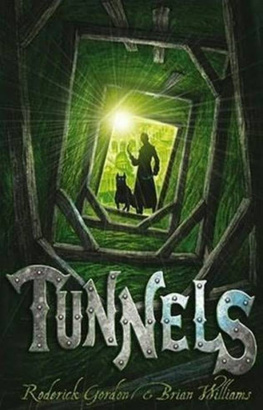David Long - Tunnels, Towers & Temples
Here you can read online David Long - Tunnels, Towers & Temples full text of the book (entire story) in english for free. Download pdf and epub, get meaning, cover and reviews about this ebook. year: 2012, publisher: The History Press, genre: Non-fiction. Description of the work, (preface) as well as reviews are available. Best literature library LitArk.com created for fans of good reading and offers a wide selection of genres:
Romance novel
Science fiction
Adventure
Detective
Science
History
Home and family
Prose
Art
Politics
Computer
Non-fiction
Religion
Business
Children
Humor
Choose a favorite category and find really read worthwhile books. Enjoy immersion in the world of imagination, feel the emotions of the characters or learn something new for yourself, make an fascinating discovery.
- Book:Tunnels, Towers & Temples
- Author:
- Publisher:The History Press
- Genre:
- Year:2012
- Rating:4 / 5
- Favourites:Add to favourites
- Your mark:
- 80
- 1
- 2
- 3
- 4
- 5
Tunnels, Towers & Temples: summary, description and annotation
We offer to read an annotation, description, summary or preface (depends on what the author of the book "Tunnels, Towers & Temples" wrote himself). If you haven't found the necessary information about the book — write in the comments, we will try to find it.
Tunnels, Towers & Temples — read online for free the complete book (whole text) full work
Below is the text of the book, divided by pages. System saving the place of the last page read, allows you to conveniently read the book "Tunnels, Towers & Temples" online for free, without having to search again every time where you left off. Put a bookmark, and you can go to the page where you finished reading at any time.
Font size:
Interval:
Bookmark:

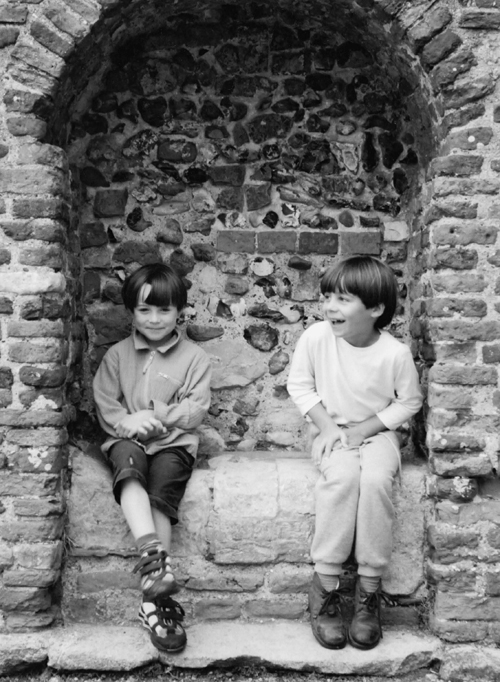
London. It is not a pleasant place; it is not agreeable, or cheerful, or easy... it is only magnificent.
H ENRY J AMES (18431916)
D r Johnson advised his companion Boswell, Sir, if you wish to have a just notion of the magnitude of this city, you must not be satisfied with seeing its great streets and squares, but must survey its innumerable little lanes and courts and more than two centuries later his advice is equally valid.
A vibrant, living organism encompassing more than 600 square miles and twenty centuries of human experience and endeavour, London may be home to millions, be visited every year by millions more and be as well documented as any great world city, yet almost 2,000 years after Romes elderly military commander Aulus Plautius first bridged the Thames near Billingsgate, it still keeps its secrets.
Now, this companion volume to Spectacular Vernacular: Londons 100 Most Extraordinary Buildings (Sutton, 2006) lifts the lid on a few of the best, revealing some of the capitals most curious corners and the history behind them.
From ancient courtyards often hidden from view to the tangle of tunnels which run beneath the streets, it tells the strange stories of some genuine oddities: a street lamp powered by sewer gas; the one street in London where you can legally drive on the wrong side of the road; a Russian tsar working incognito in a vanished naval dockyard; even a Nazi memorial sited among the heroes and adventurers of the British Empire.
Written as much for the inquisitive armchair traveller as for the well-informed London resident, for the first-time traveller or regular visitor, the fact that most of these places are accessible to the public and often at no charge means this book provides the best possible start for anyone who wishes to get off the beaten track and under the skin of the hidden city that is modern-day London.
David Long
July 2006
www.davidlong.info
The dead know only this: that it was better to be alive
James Elroy Flecker (18841915)
A prehistoric burial ground known as the Bone Hill and now the sole surviving City burial ground as distinct from a churchyard one of the three great fields of Finsbury, became a dumping ground for cartloads of bones from the charnel house at St Pauls. Later, as the Cemetery of Puritan England, it was established as a place of more orderly interment for dissenters and other religious nonconformists.
Having leased the land since the early fourteenth century, the Corporation of London had in fact planned in the 1660s to use it as a place to bury the dead from the Great Plague. However, no evidence that they ever did so has come to light, nor more significantly has any documentation been produced proving that it was consecrated ground.
As a result it was much favoured by religious nonconformists who while it lacks any church buildings, although Wesleys famous chapel is opposite were thus free to conduct funerals here and to bury their dead without reference to the Book of Common Prayer.
With the last such interment here made as long ago as January 1854, it has been a public open space since 1864 and as such provides a peaceful amenity for City workers. Nevertheless it still gives one an excellent impression of how Londons old burial grounds would have looked in the years before the search for space led to a move out of town in the mid-nineteenth century. Thus, in just 4 acres, with a spiked gate at one corner to thwart the efforts of the resurrection men, are crammed the remains and memorials of at least 120,000 individuals.
With their disorderly graves now crowded together beneath the spreading branches of mature plane, oak and lime trees, those in residence include Daniel Defoe, William Blake and his wife Catherine Sophia, John Bunyan, Susannah Wesley (mother of nineteen, including John and Charles) and Cromwells son-in-law General Fleetwood. There are also at least two proper villains: Robert Tilling, who was executed for murdering his master in 1760; and the banker Henry Fauntleroy, who forged signatures, and scammed and squandered an incredible 250,000 (at nineteenth-century prices) before being hanged at Newgate Gaol.
Inevitably there are some peculiarities here too. On Bunyans memorial, for example, the recumbent figure is probably not Bunyan at all but rather a representation of the tombs original incumbent, one John Strudwick. His effigy was added to the tomb in 1862 when, at the behest of the Earl of Shaftesbury, this was restored using funds raised by public subscription. Nearby is the tomb of John Lettsom, a physician who made his fortune in the West Indies before introducing the mangel-wurzel to England, and another for poor Dame Mary Page, widow of Sir Gregory Page Bt, who in 67 months was tappd 66 times and had taken away 240 gallons of water without ever repining for her case or fearing the operation. It was, alas, all to no avail and she died, aged 56, in 1728.

A ttached to Englands oldest public art gallery, owned and administered by the College of Gods Gift at Dulwich, this singularly handsome building has its origins in an establishment founded by actor Edward Alleyn nearly 400 years ago.
Having accrued a considerable fortune as James Is Master of the Royal Game of Bears, Bulls and Mastiffs, in 1605 Alleyn paid 5,000 for the manor of Dulwich. Married but without issue he further decided to endow an educational establishment there and, wishing his foundation to rival the likes of Charterhouse, Merchant Taylors or even Eton, he provided accommodation for fellows as well as alms-people. When he died in 1626 Alleyn also bequeathed a collection of several hundred paintings to his new college.
Thereafter, and despite backing the wrong side in the Civil War the fellows melted down their collection of silver to support the Royalist cause, and as a consequence had the Cromwellians quarter troops on them when their fortunes turned the college prospered. Later still Alleyns by now valuable collection of paintings was augmented by a generous bequest of another 370 from the painter Sir Francis Bourgeois.
With many of these paintings truly world-class, the bulk of this later bequest had come via art dealer Noel Desenfans who had acquired many from the famed collection of the Duc dOrleans. He had been collecting for some years on behalf of King Stanislaus II, who intended the works to form the nucleus of a Polish national gallery in Warsaw. However, the countrys partition in 1795 and the Kings abdication made such a thing impossible.
With Poland gone from the map, split between Prussia, Russia and Austria, Desenfans and his wife shared a house with Sir Francis in England. Maintaining a curious mnage , which indeed has continued beyond the grave with the three of them still lying together in sarcophagi in the little amber-lit structure shown here, Desenfans first offered the collection to the Russian and later the British governments, but there were no takers.
Next pageFont size:
Interval:
Bookmark:
Similar books «Tunnels, Towers & Temples»
Look at similar books to Tunnels, Towers & Temples. We have selected literature similar in name and meaning in the hope of providing readers with more options to find new, interesting, not yet read works.
Discussion, reviews of the book Tunnels, Towers & Temples and just readers' own opinions. Leave your comments, write what you think about the work, its meaning or the main characters. Specify what exactly you liked and what you didn't like, and why you think so.

